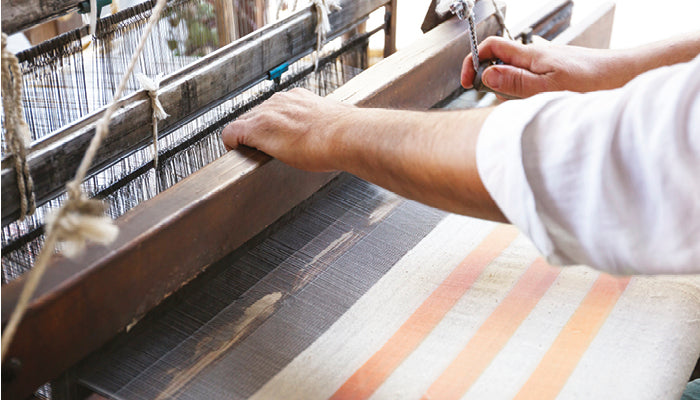Handloom/Ikat
At Nomads, we love the unique quality that each metre of handloom fabric possesses, and we celebrate this original material that could never be replicated by a machine, creating our own exclusive textural patterned fabrics in beautifully coloured cotton threads. And, because the manual loom is not electrically-driven, it allows artisans who do not have access to electricity the ability to weave fabrics, while also being more environmentally friendly.
Handloom is a skilled process that’s steeped in cultural history, and an essential part of both the Indian economy and rich heritage. But this ancient artisan technique is in danger of dying out in favour of mechanical methods and cheap labour.
The level of artistry and intricacy achieved in handloom fabric is unparalleled. Crafting this fabric takes time, patience, and a unique set of skills, which is where our talented artisan partners really shine. The handloom process begins with yarn being hand-dyed before it’s carefully woven on a handloom which is operated solely by a skilled artisan. The unique nature of the hand-woven process means that no two lengths are ever the same.

unique quality
We celebrate this original material that could never be replicated by a machine.

original material
No two lengths are ever the same.

artisan heritage
Crafting this fabric takes time, patience and a unique set of skills.
Handloom ikat
Ikat is an ancient dyeing technique that has its origins in many places around the world. It’s created by resist-dyeing bundles of yarn prior to weaving into cloth to form a patterned fabric. Ikat’s characteristic ‘blurred’ pattern designs are a result of the extreme difficulty the weaver has in lining up the dyed yarns so that the pattern comes out perfectly in the finished cloth.
The unique nature of ikat fabric allows us to create our own exclusive textural patterned fabric using beautifully coloured cotton yarn that perfectly complements hues from across the range. Working in collaboration with our talented artisans in India, we’re able to develop ikat patterns that give our easy-to-wear everyday pieces a special textural touch.